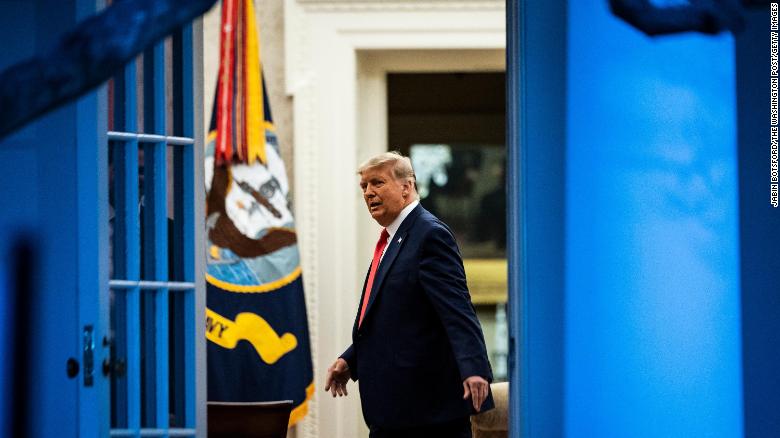Predatory corporatisation of the media and why strengthening the institution of the editor is vital
We journalists have some experience of fighting governmental repression of the media. But how do we, or better still, how should we, handle owners' oppression of their own media, meaning owners dictating what is to be published and what not, to forcing the editor to oblige, or ignoring the editor altogether if he refuses? The stories that circulate are horrendous of editors being made mere rubber stamps and the whole newsroom remaining silent as people from the owner's office force journalists to publish false, motivated and scandalous stories against their business rivals or perceived antagonists.
While discussing why a certain business house was bringing out a new newspaper, a fellow editor said that because they were going for a new several thousand crore investment and they needed a media, especially a newspaper, to protect them. This was especially so because the existing leader in that sector, who owned several media outlets, was preventing the former's entry by publishing false and derogatory reports about them.
One can easily imagine what role the new newspaper will play. The underlying meaning of the story is that, as our business houses increase in number, they are investing resource and power, into newspapers (read media in general) that can serve as a part of their arsenal for business growth, fighting rivals and frightening others from exposing their malpractices.
So professional journalism be damned, and along with it, the ideals of freedom, democracy, truth, people's rights, public interest, collective good, unearthing corruption, fighting for justice, equality, fairness, building a just society, etc. The vital role of the media in holding power to account vanishes as does the notion of accountability and transparency.
The threat to a free press comes from many quarters — the government, the advertisers, the owners and even the failure of journalists to maintain their own ethical standards.
The threat from the government emanates both from the regulatory framework that it creates through enactment of various repressive laws and also in the manner in which such laws are put into practice, which reflects the government's overall attitude towards the free press. The Digital Security Act (DSA) in Bangladesh is just the latest and the most virulent example of it.
Most laws in Bangladesh relating directly or indirectly to the media are mostly directed either to repressing or controlling the media. There are no laws in our statute books (and I would love to be proved wrong), except for the Right to Information Act (RTI), that either protects the journalist, the newspapers, or the media in general, or proactively help its cause by protecting sources, and whistle-blowers, and preventing police harassment or arbitrary arrests or questioning of media professionals.
The threat from advertising has always been there. A corporation may be looting the country dry but any hint of an exposé would automatically delist a newspaper from receiving their advertisement. This practice is not new, however; its intensity has risen to an unbearable level. One can ask how we can expect a business house to give ads if we are writing against them, forgetting that we are, in fact, not writing against them but against their unethical and unlawful practice, which must be exposed for the betterment of the society and for the environment.
The relationship between the media and its advertisers must in no way be allowed to impinge on the freedom of journalists to report freely and ethically. It is a complex issue and has become more so due to Covid-19 which has drastically affected the media's, especially the newspapers' business model.
However, our main focus today is on the issue of corporate control of the media, not in general, but the ones they own. We want to confine our discussion only to newspapers about which I happen to know a little. At first it may appear to be an oxymoron, a contradiction in itself. If someone owns something it is only natural that they will control it. Yes, in many cases, but not in all. A person may own a hospital but can he run it on his whims just because he has invested in it? It must be the doctors who run the hospital. Businessmen may own airlines, but are their planes run as they wish without professionals? This is also true in case of the media. Many people may invest in the newspaper industry, but it must be the professional journalists who run it.
This brings us to the bigger question on what is the role of a newspaper in general. Is it only to serve the interests of the owners? As someone said, "Freedom of the press is the freedom of the owners of the press". Is that really true? Then what happens to the interests of the society in general, of the people, of principles, of ideals, of a nation's interests? What happens to the fundamental principle of freedom of speech, people's right to know, of holding power accountable?
If the media's role is far bigger than the corporate interest of the owners — and by definition it must be bigger, encompassing the interest of the nation as a whole — then, it must be allowed to function with full freedom with professional journalists at its helm. Some experiences from the rest of the world may help to prove this point.
As the need for higher investment in newspapers grew over time, especially due to technological sophistication of the printing press requiring more capital, individual ownership became difficult and investment from the financial and corporate world began to enter this sector. If we look at the newspapers of any industrialised country, they atrract investment from banks, insurance companies, corporations, mutual and investment funds, services industry, etc. Why do these diverse groups invest in newspapers? Simply because newspapers were good investments and investors saw it as a sector with a good ROI (return on investment).
Here is the interesting twist. Investment came to newspapers because of its good ROI, and it was so because newspapers continued to serve public interest — not the interest of the diverse interest groups that owned the sector— and thereby grew their business and thus gave attractive dividends to the investors.
The rising corporate investment in the media in Bangladesh is nothing new or unprecedented. It was, to some extent, inevitable. What is, however, unprecedented and not inevitable, is the predatory nature of the corporate control and the total destruction of the ethical foundation of the newspapers. This is destroying media credibility — the life blood of a media's acceptability.
If an investor wants to make profit out of his investment in the newspaper, which is not an unnatural or unjustified expectation, then the only way to do so is to allow the media to function in the way that media is supposed to — serve public interest. Through ethical journalism and upholding the common good and promoting freedom of speech and accountability, a newspaper gains credibility, which leads to greater readership, which attracts advertisers, which brings in increased revenue, and which then leads to attractive remuneration and good working conditions for the journalists as well as dividends for the investors. This is the business model of a free and independent media, and there is none other.
However, when investors break the above cycle and use their newspapers to protect and serve their own vested interest — as against that of the public — then serious problems arise which we are now facing in Bangladesh.
We repeat, corporate interest in newspapers is neither new nor unique to Bangladesh. However, there is a big difference. What exists in countries with matured newspapers is the institution of the editor. It is well-established, highly-regarded and enjoys huge public credibility. (Both the western newspapers and their editors had suffered a huge loss of credibility in supporting the Iraq invasion. However, many of them realised their mistake and have done impressive exposés on the whole sordid affair, helping to restore some of their lost credibility).
We need to seriously think about the restoration, protection and preservation of the institution of "the editor". We have great examples in Tofazzal Hossain Manik Mia, Zahur Hossain Chowdhury and Abdus Salam from the Pakistan period, and Maulana Akram Khan, Abul Kalam Shamsuddin and Abul Mansur Ahmad from the pre-1947 period to inspire us to rebuild the institution of the "editor" in Bangladeshi media today.
The editor is that pivotal person who protects the freedom of the media from attacks from all sides — government, agencies, large corporations, powerful political leaders and from the interference of the owner — and through his courageous, ethical and honest leadership and non-partisan stance, inspires his fellow journalists to reach the highest standards of objective journalism. This is pivotal for the survival of the free and independent media in Bangladesh.
Admittedly, many of us have failed in this task. We have ourselves destroyed this institution by becoming a PR person for the owner. Many of us have used our position to curry favour with the rich and the powerful, peddled influence for personal gains, misused our positions to harm others and twisted facts to be on the right political side, even while knowing that the truth lay elsewhere.
On a different level, many of us did not pay enough attention to our own newspapers as to what were being published, how well-researched they were, what was the quality and reliability of the sources used and whether sufficient due diligence was done before a corporate or personal reputation was questioned.
All this brought down both the prestige of the institution of the editor and the credibility of the newspaper that he led.
This must change for the good of journalism and for the good of the country, which is on the verge of attaining lower-middle-income country status on the global stage.
The emergence of the social media, the tsunami of news portals with an endless flow of unedited, unverified, unsourced news and the deliberate promotion of "alternative facts" by governments and powerful business lobbies have perhaps made the role of the editor the most crucial for the restoration of public faith in journalism. As someone said, "if you do not read the news, you are uninformed, but if you read the news you are misinformed". This is something that must worry us journalists if we want to save our profession.
As of today, a total of 1,200 dailies are published from Dhaka city. (We should be holding the world record in this). Country-wide, the figure is 3,222. On the face of it, newspapers should be among the most flourishing of industries in the country. What is their business model? Who are their readers and advertisers? Those of us who have been in this field for a while and know well how the market has shrunk wonder as to the sustainability of all these publications. Unless, of course, they will all sing the praise of their corporate owners, fight for their business interest, publish fake news about their rivals and ride on the subsidy of the owners—and all the while professional journalism will fall by the way side.
In one sense, we can rejoice in the words of Mao Zedong: "Let a thousand flowers bloom". But on the other, we are fully aware how media credibility can be destroyed in the wrong hands and how harmful the media can be in the age of unedited, badly edited and totally fake news.
This article originally appeared on The Daily Star and has been reproduced with permission.

















